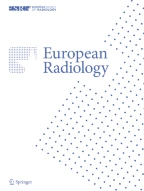References
Diab R, Chang D, Zhu C et al (2023) Advanced cross-sectional imaging of cerebral aneurysms. Br J Radiol 96:20220686. https://doi.org/10.1259/bjr.20220686
Mossa-Basha M, Zhu C, Yuan C et al (2022) Survey of the American Society of Neuroradiology Membership on the use and value of intracranial vessel wall MRI. AJNR Am J Neuroradiol 43:951–957. https://doi.org/10.3174/ajnr.A7541
Yoshikawa K, Moroi J, Kokubun K et al (2021) Role of magnetic resonance vessel wall imaging in detecting and managing ruptured aneurysms among multiple intracranial aneurysms. Surg Neurol Int 12:460. https://doi.org/10.25259/SNI_618_2021
Cornelissen BMW, Leemans EL, Slump CH et al (2019) Vessel wall enhancement of intracranial aneurysms: fact or artifact? Neurosurg Focus 47:E18. https://doi.org/10.3171/2019.4.FOCUS19236
Matsushige T, Shimonaga K, Mizoue T et al (2019) Lessons from vessel wall imaging of intracranial aneurysms: new era of aneurysm evaluation beyond morphology. Neurol Med Chir (Tokyo) 59:407–414. https://doi.org/10.2176/nmc.ra.2019-0103
Matsushige T, Shimonaga K, Ishii D et al (2019) Vessel wall imaging of evolving unruptured intracranial aneurysms. Stroke 50:1891–1894. https://doi.org/10.1161/STROKEAHA.119.025245
Molenberg R, Aalbers MW, Appelman APA et al (2021) Intracranial aneurysm wall enhancement as an indicator of instability: a systematic review and meta-analysis. Eur J Neurol 28:3837–3848. https://doi.org/10.1111/ene.15046
Ishii D, Sakamoto S, Okazaki T et al (2022) Abdominal aortic calcification volume is associated with wall enhancement of unruptured intracranial aneurysm. World Neurosurg 167:e122–e126. https://doi.org/10.1016/j.wneu.2022.07.119
Ishii D, Zanaty M, Roa JA et al (2021) Concentration of Lp(a) (Lipoprotein[a]) in aneurysm sac is associated with wall enhancement of unruptured intracranial aneurysm. Stroke 52:1465–1468. https://doi.org/10.1161/STROKEAHA.120.032304
Wu X-B, Zhong J-L, Wang S-W et al (2022) Neutrophil-to-lymphocyte ratio is associated with circumferential wall enhancement of unruptured intracranial aneurysm. Front Neurol 13:879882. https://doi.org/10.3389/fneur.2022.879882
Peng F, Niu H, Feng X et al (2023) Aneurysm wall enhancement, atherosclerotic proteins, and aneurysm size may be related in unruptured intracranial fusiform aneurysms. Eur Radiol. https://doi.org/10.1007/s00330-023-09456-9. https://doi.org/10.1007/s00330-023-09456-9
Funding
The author states that this work has not received any funding.
Author information
Authors and Affiliations
Corresponding author
Ethics declarations
Guarantor
The scientific guarantor of this publication is Prof. Peter Bogner, Head of the Department of Medical Imaging, University of Pécs Medical School.
Conflict of interest
The author of this manuscript declares no relationships with any companies, whose products or services may be related to the subject matter of the article.
Statistics and biometry
No complex statistical methods were necessary for this paper.
Informed consent
NA
Ethical approval
NA
Study subjects or cohorts overlap
NA
Additional information
Publisher's note
Springer Nature remains neutral with regard to jurisdictional claims in published maps and institutional affiliations.
This comment refers to the article available at https://doi.org/10.1007/s00330-023-09456-9
Rights and permissions
About this article
Cite this article
Tóth, A. Wall enhancement in stable aneurysms needs to be understood first to be able to identify instable and culprit aneurysms. Eur Radiol 33, 4915–4917 (2023). https://doi.org/10.1007/s00330-023-09741-7
Received:
Revised:
Accepted:
Published:
Issue Date:
DOI: https://doi.org/10.1007/s00330-023-09741-7
